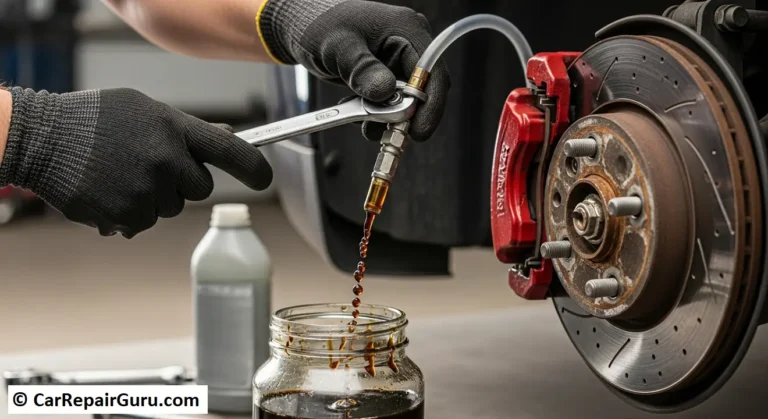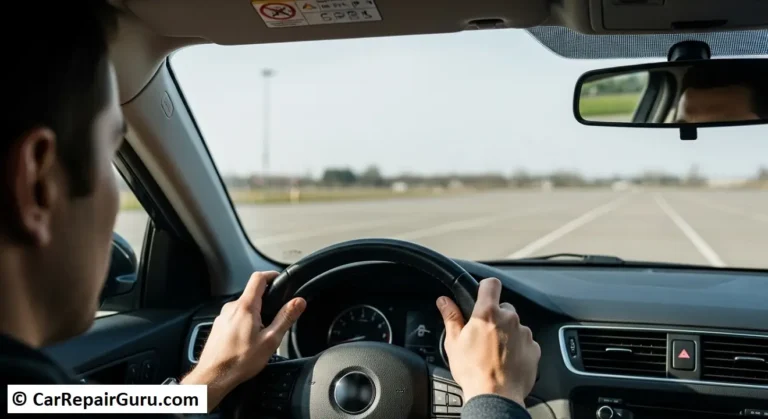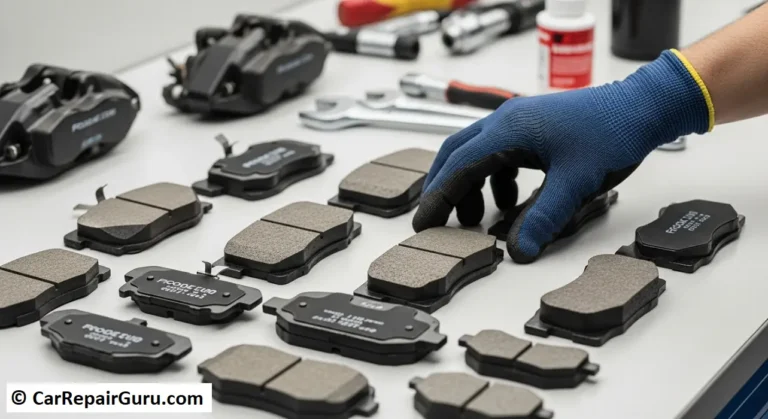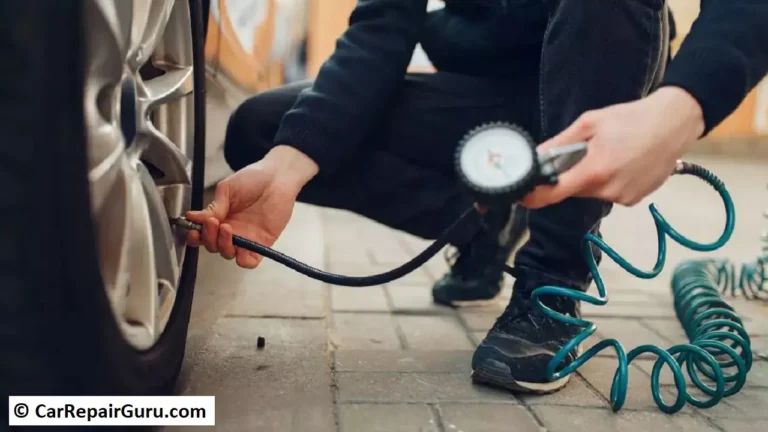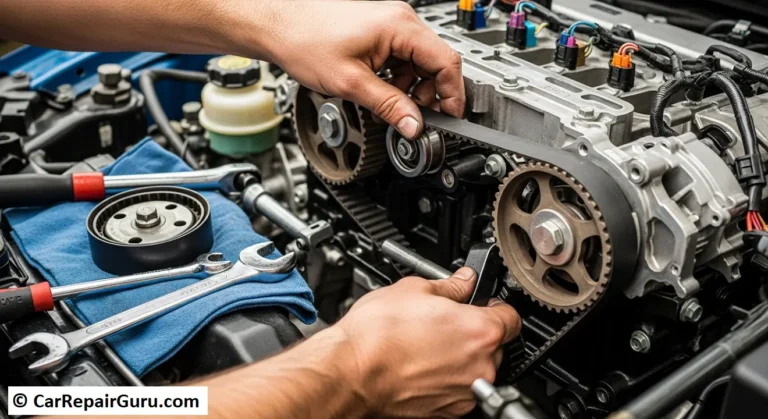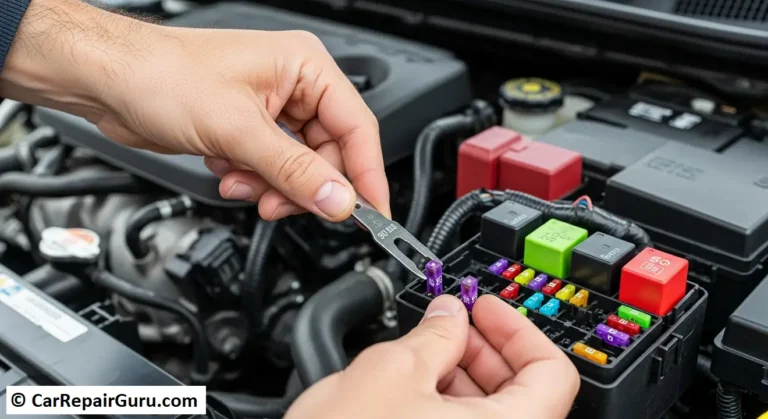
Picture this: you’re driving on a rain-slicked road when a deer suddenly leaps into your path. Your instincts take over. You slam on the brake pedal with all your might. In that heart-stopping moment, what happens next is often determined by a three-letter acronym: ABS. Have you ever felt a strange, rapid pulsing under your foot during a hard stop? That’s not a malfunction; that’s your Anti-lock Braking System doing its job perfectly.
An Anti-lock Braking System (ABS) is a critical safety feature in all modern cars that prevents the wheels from locking up during sudden, hard braking. Its primary purpose is to help you maintain steering control, allowing you to swerve around an obstacle while braking. In this guide, we’ll demystify how this life-saving technology works, explore its benefits and limitations, teach you how to use it correctly, and explain what to do if that dreaded ABS warning light appears on your dashboard.
What is ABS and Why is It a Standard Safety Feature?
Before ABS became a standard feature, panic braking was a far more dangerous affair. When a driver slammed on the brakes in a car without ABS, the wheels would often “lock up”—that is, they would stop rotating completely while the car was still moving. This instantly transformed the tires from gripping rubber circles into sliding, uncontrollable skids. A car with locked wheels loses all steering capability, meaning you could turn the steering wheel all you want, but the car would continue plowing straight ahead or spin out of control.
This is the exact problem the ABS system was designed to solve. Recognizing the immense danger of locked wheels, automotive engineers developed a system that could automatically intervene. The solution was brilliant in its simplicity: prevent the wheels from ever fully locking in the first place.
Its roots are in the aviation industry of the 1950s, where it helped planes stop on short runways. After decades of refinement, its value for road vehicles became undeniable. Due to its proven effectiveness in preventing accidents, ABS has become a mandatory standard safety feature on all new passenger cars sold in the United States since 2013 and in the European Union since 2004, cementing its place as one of the most important safety innovations in automotive history.
How Does an ABS System Actually Work? The Step-by-Step Process
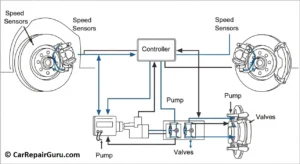
The magic of an ABS system lies in a high-speed feedback loop—a constant conversation between your wheels and an onboard computer. It all happens faster than you can blink. So, how does an ABS system work when you hit the brakes? Here is the step-by-step process:
1. You Press the Brake Pedal Hard: The entire sequence is triggered when you make a panic stop. The system is designed to activate only under heavy braking conditions that would otherwise cause a wheel to lock.
2. Sensors Monitor Wheel Speed: Each wheel on your car is equipped with a wheel speed sensor. These sensors are the “eyes” of the system, constantly monitoring the rotational speed of each wheel and sending that data to the ABS controller.
3. Controller Detects Imminent Lock-up: The ABS controller, or ECU (Electronic Control Unit), is the system’s “brain.” It analyzes the data from the sensors. If it detects that one wheel is slowing down significantly faster than the others—a sure sign it’s about to lock and skid—it immediately takes action.
4. Valves Release Brake Pressure: The controller sends a command to a set of hydraulic valves in your brake lines. For the wheel that’s about to lock, the valve opens for a split second, momentarily releasing the intense brake pressure. This allows the wheel to start rotating again.
5. Valves Re-apply Pressure: As soon as the sensor reports that the wheel is spinning again, the valve closes, and the system instantly re-applies the brake pressure to continue slowing the car down.
6. Rapid Pulsing Action: This entire cycle of releasing and re-applying brake pressure happens incredibly fast—up to 15 times per second. This is the pulsing action you feel in the brake pedal. You’re not imagining it; you’re feeling the system actively working to keep you safe.
The 4 Key Components of an ABS System
To truly understand how anti-lock braking systems work, it helps to know the four main parts that make up the team:
- Speed Sensors: Located at each wheel hub, these sensors measure how fast each wheel is spinning and are the primary source of data for the system.
- Valves: These are located in the brake line for each brake. The ABS controller can open these valves to release hydraulic pressure to a specific wheel, preventing a lock-up.
- The Pump: When the valves release pressure, the pump is there to quickly restore it. This ensures that as soon as the wheel regains traction, braking force is immediately available again. You can sometimes hear this pump as a buzzing or humming noise during ABS activation.
- The Controller (ECU): This is the onboard computer. It receives information from the wheel speed sensors and uses it to command the valves and the pump, orchestrating the entire anti-lock process.
The Core Benefits of ABS – More Than Just Stopping Power
The benefits of ABS extend far beyond simply stopping the car. The system provides a suite of advantages that work together to enhance driver control and safety during an emergency.
- ✅ Maintained Steering Control: This is the single most important benefit. Because the wheels don’t lock, you can steer the car around an obstacle while applying maximum braking force. This ability to “brake and swerve” can be the difference between a collision and a close call.
- ✅ Optimal Stopping Distance on Most Surfaces: On wet and dry pavement, ABS helps achieve the shortest possible stopping distance by maintaining the maximum braking force just below the threshold of a skid.
- ✅ Increased Vehicle Stability: By preventing individual wheels from locking, ABS helps stop the car from fishtailing or spinning out of control during a panic stop, keeping the vehicle stable and pointed in the right direction.
- ✅ Improved Driver Confidence: Knowing that your car is equipped with this powerful safety net can help you react more decisively and calmly in a high-stress situation.
ABS vs. Non-ABS Brakes: A Head-to-Head Comparison
Understanding the practical differences between ABS vs non-ABS brakes clearly illustrates the massive leap in safety technology. For drivers who learned on older cars, the correct braking technique has completely changed. Here’s a direct comparison:
| Feature | With ABS | Without ABS (Conventional Brakes) |
|---|---|---|
| Braking Technique | Stomp firmly on the brake and hold it down. Let the system do the work. | Requires the driver to manually “pump the brakes” to avoid a skid. |
| Steering Control | Steering is maintained throughout the hard braking event. | Steering is completely lost if the front wheels lock up. |
| Wheel Behavior | Wheels continue to rotate slightly, maintaining grip. | Wheels lock completely and slide across the pavement. |
| Driver Sensation | A noticeable pulsing or vibration in the brake pedal and a buzzing sound. | The feeling of a violent skid, often with the sound of screeching tires. |
| Best Performance | Excellent on wet and dry pavement, where steering control is paramount. | Can sometimes stop slightly shorter on very loose surfaces like deep gravel or snow. |
How to Brake Correctly with an ABS-Equipped Car
For decades, drivers were taught to “pump the brakes” in a skid. With a modern vehicle, this is exactly the wrong thing to do. Your car’s ABS is designed to pump the brakes for you, but much faster and more effectively than any human ever could. To use ABS correctly, just remember this simple, life-saving mantra: Stomp, Stay, Steer.
- Stomp: In an emergency, press the brake pedal as hard and as fast as you can. Don’t be gentle or hesitant. Overcome the instinct to be cautious and apply decisive force to activate the system.
- Stay: Keep your foot planted firmly on the brake pedal. You will feel a strong vibration or pulsing sensation—this is normal! It’s the sign that the ABS is working. Do not lift your foot or try to pump the pedal.
- Steer: Look and steer where you want to go. The biggest benefit of ABS is that you can still steer, so use it. Look at the open path, not at the obstacle, and guide the car to safety.
The Limitations of ABS – What It Can’t Do
While the ABS system is a phenomenal piece of technology, it’s a driver aid, not a magic shield. Understanding the limitations of ABS is crucial for being a safe and responsible driver.
- It Cannot Defy Physics: ABS cannot change the laws of physics. If you are driving too fast for the road conditions, especially in a sharp corner, ABS may not be able to prevent a crash. Speed and attentiveness are still your primary safety tools.
- It Does Not Create Traction: ABS can only make the best use of the available grip between your tires and the road. On surfaces with almost no traction, like black ice or during a severe hydroplane, the system has very little grip to work with.
- Longer Stops on Loose Surfaces: One notable exception is on loose gravel or in deep snow. In these specific conditions, a locked wheel can build up a wedge of material in front of it, which can help stop the car faster. Because ABS prevents this lock-up, it can sometimes lead to slightly longer stopping distances on these surfaces.
- It Requires Your Input: The system won’t activate unless you brake hard enough, and it can’t steer the car for you. You are still the one in command.
My ABS Warning Light is On: What It Means and What to Do
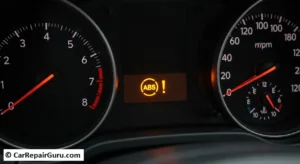
Seeing a new warning light illuminate your dashboard can be stressful. If it’s the amber ABS warning light, don’t panic, but do pay attention.
What the Light Indicates: This light specifically means there is a fault within the Anti-lock Braking System itself. The car’s onboard diagnostic computer has detected an issue with one of the components, like a sensor or the controller.
Is It Safe to Drive? Here is the most important thing to know: your standard brakes should still work. You will still be able to stop the car. However, the anti-lock functionality is disabled. This means if you get into a panic-stop situation, your wheels can and will lock up, just like in an older car without ABS.
What to Do: Because this critical safety feature is offline, you need to adjust your driving. Drive more cautiously, leave extra following distance between you and the car ahead, and avoid situations that might require sudden braking. You should schedule an appointment with a qualified mechanic as soon as possible to diagnose and fix the issue.
Common Causes for the ABS Light:
- A failed or dirty wheel speed sensor (the most common reason).
- A broken or damaged wire leading to a sensor.
- Low fluid level in the ABS hydraulic unit.
- A faulty ABS controller/pump module.
Staying in Control – The Final Word on ABS
The Anti-lock Braking System is more than just a feature; it’s a fundamental pillar of modern vehicle safety. By preventing wheel lock-up, it gives you the power to steer out of harm’s way when you need it most. Now that you understand how it works, you can be a more confident and effective driver.
Remember to trust the system, embrace the “Stomp, Stay, Steer” technique in an emergency, and don’t be alarmed by the pulsing pedal. A healthy ABS is part of a healthy braking system. If your ABS light is on, or it’s simply been a while, schedule a professional brake inspection to ensure your car is ready to protect you for the road ahead.
Frequently Asked Questions About Anti-lock Brakes
What’s the difference between the ABS light and the brake warning light?
This is a critical distinction. The ABS Light is typically amber or yellow and indicates a problem with the anti-lock system only; your main brakes still function. The main Brake Warning Light is red and often looks like (!) or BRAKE. A red light indicates a serious problem with your primary hydraulic braking system, such as a loss of brake fluid or pressure. If the red brake light comes on, it is not safe to drive. Pull over as soon as it is safe and have your vehicle towed.
Can I add ABS to an old car that doesn’t have it?
While anything is possible with enough time and money, adding an ABS system to a non-ABS car is not a practical or cost-effective project. It would require integrating sensors, a controller, a pump, and complex wiring into a car not designed for it. It is far more sensible to purchase a vehicle that was built with ABS from the factory.
What does it feel like when ABS activates?
When ABS activates, you will feel a distinct and sometimes jarring sensation. The most common description is a rapid pulsing or vibration that you can feel through the brake pedal. You may also hear a mechanical buzzing or grinding sound coming from under the hood as the ABS pump and valves do their work. This is all completely normal. Do not lift your foot when you feel it—it’s your sign to keep pressing!
Does ABS make my brakes wear out faster?
No, this is a common myth. ABS is a passive system that only activates during the rare moments of emergency, hard braking. During the other 99.9% of your normal, everyday driving, the system is dormant and has no impact on the wear and tear of your brake pads or rotors.
Do I need to brake differently on snow and ice with ABS?
No, the “Stomp, Stay, Steer” method is still the best technique, especially on slippery surfaces. While ABS cannot create traction on pure ice, its ability to prevent your wheels from locking is hugely beneficial for maintaining steering control and preventing a spin-out, which is a major risk on snow and ice.
